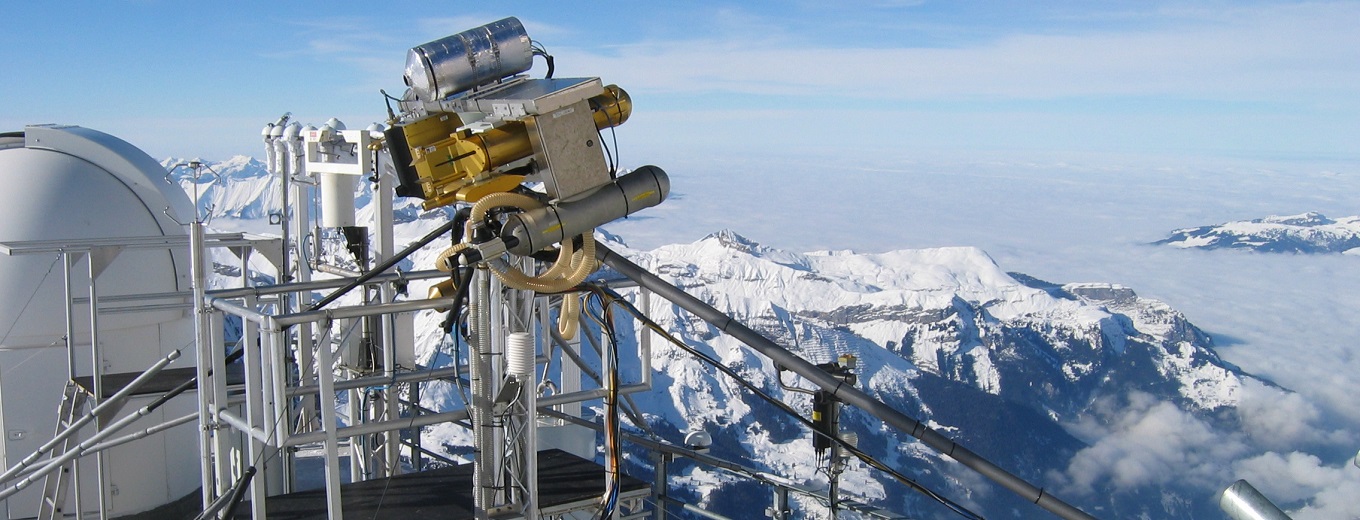The Aerosols, Clouds and Trace Gases Research Infrastructure (ACTRIS) brings together 15 countries; Switzerland is contributing as an observer.
On 25 April, the Aerosols, Clouds and Trace Gases Research Infrastructure (ACTRIS) was officially established as a European Research Infrastructure Consortium (ERIC) by the adoption of the Commission Implementing Decision by the European Commission (EC), as announced in a press release on 02 May. Therewith, ACTRIS is the 26th ERIC in the European ERIC landscape.
ACTRIS is a distributed Research Infrastructure (RI) set up and coordinated by European collaborative projects like ACTRIS PPP, ACTRIS-2 or EUROCHAMP-2020, funded under previous EC framework programmes. The ACTRIS implementation project, an ongoing Horizon 2020 Coordination and Support Action (CSA), started in January 2020 and runs for four years to enable the transition of the existing RI to a fully functional ERIC. ACTRIS entered the ESFRI roadmap 2016 and was awarded the ESFRI landmark in the 2021 roadmap (see SwissCore article).
The consortium of ACTRIS coordinates activities to document concentrations of atmospheric constituents and to examine processes and their effects on climate, air quality, human health and ecosystems. This results in a unique portfolio of services for researchers from academia and the private sector covering aerosol, cloud, and reactive trace gases research, the production of high-quality datasets for atmospheric sciences and the provision of access to instrumented platforms, tailored scientific and technological usage. It is needed because the atmosphere is a highly complex system comprising countless chemical and physical processes. To understand this system and be able to make useful and reliable predictions, complex models and excellent, comprehensive datasets are needed. ACTRIS furthermore develops new technologies and algorithms for monitoring activities for climate and air quality models, satellite retrievals and forecast systems. The observations done at earth-based stations are complemented by satellite missions.
Until now, more than 100 Research Performing Organisations from 22 countries have shown commitment. ACTRIS includes 15 of these countries as founding members, which are Austria, Belgium, Bulgaria, Cyprus, Czechia, Denmark, Finland, France, Germany, Italy, Norway, Poland, Romania, Spain and Sweden. Switzerland is involved as founding observer. All of the founding members host national ACTRIS facilities. The statutory seat is located in Helsinki (Finland), while the Head office units are split between Finland and Italy.
An ERIC is a special legal form facilitating the establishment and operation of RIs with European interests. This legal form is recognised in all EU countries and has the flexibility to be adapted to the specific requirements of a RI. It can be used for new RIs or existing ones and is much faster to set up than creating an international organisation to operate transnational and distributed RIs. In general, ERICs are operated on a non-economic basis, while they get exemptions for VAT and excise duties. An ERIC should always bring added value to the European Research Area by improving the respective scientific or technological field, granting access to the European research community, contributing to the mobility of knowledge and researchers and fostering the dissemination and optimisation of results. The ERIC Forum project has published a toolkit that collects in one online platform practical information regarding to ERICs financing, administration, human resources, communication, impact and evaluation.
While an ERIC is meant to be a European Joint venture, non-EU countries like Switzerland can and do participate. In the case of ACTRIS, the National ACTRIS consortium Switzerland is a funding observer, with the opportunity to join the consortium at a later point as a full member. The Swiss ACTRIS consortium is coordinated by the Paul-Scherrer Institute (PSI). It comprises the Swiss State Secretariat for Education, Research and Innovation (SERI), the Federal Office for Environment (FOEN), the Swiss National Science Foundation (SNSF), the Swiss Federal Laboratories for Materials Science and Technology (EMPA), MeteoSwiss, the Swiss Federal Insitute of Technology Zurich (ETH Zürich), the University of Berne and the physical-meteorological Observatorium Davos (PMOD/WRC) as well as the Jungfraujoch Observatory (JFJ). The Swiss consortium runs two topical centres, two observational platforms and one exploratory platform; all of them are also part of the international RI and accessible to other partners of the ERIC. ACTRIS is one of 12 infrastructures considered to be of major importance for the Swiss Science Community in the 2019 Swiss Roadmap for Research Infrastructures. Nevertheless, it has yet to be decided if Switzerland will join as a full member. Meanwhile, Switzerland is in the process of becoming a full member of the six ERICs, ICOS, EPOS, BBMRI, ECRIN, CESSDA and DARIAH, until the summer of 2023 following a parliamentary decision from December 2022. Furthermore, this decision simplified the process for Switzerland to join ERICs in the future. From 01 July 2023 on, the Federal Council can decide to join an ERIC, there is no need for a parliamentary decision anymore. In the ERICs ESS, SHARE and CLARIN, Switzerland is involved as an observer as in the case of ACTRIS. For these and other RIs like GGP, EMPHASIS, SLICES or ECCSEL, in which Switzerland is involved, the Federal Council still must decide if a full membership is wanted.

